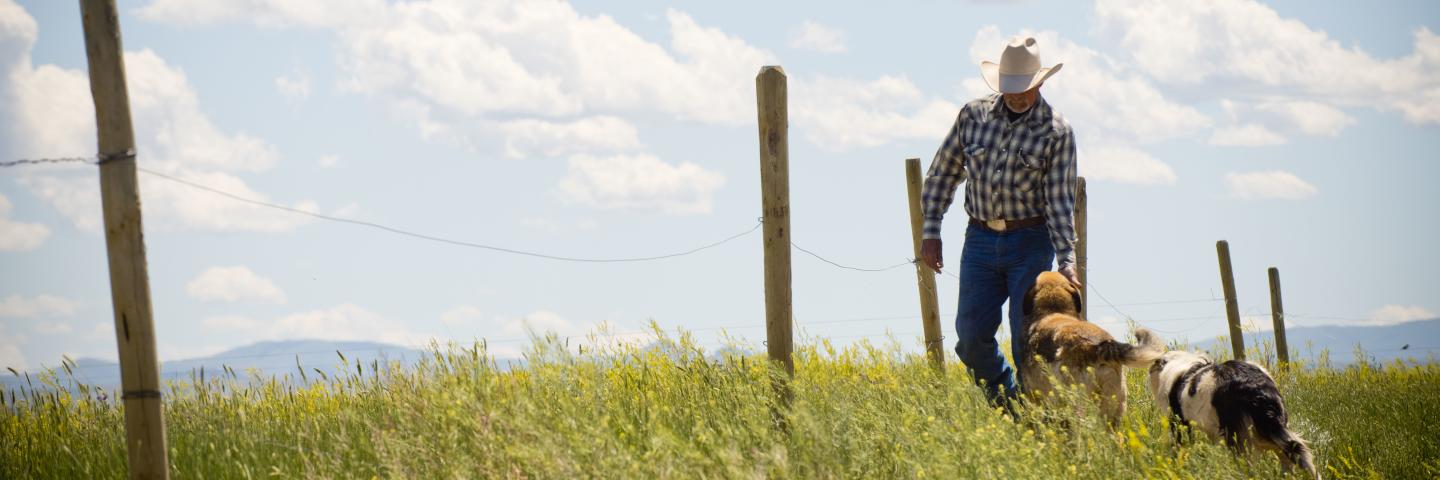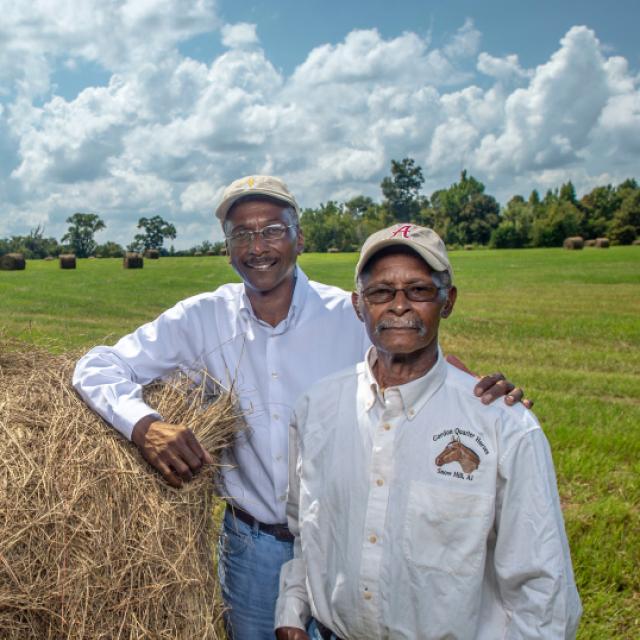
This Targeted Implementation Plan (TIP) is available in Stillwater County, Montana. TIPs are local-level Environmental Quality Incentives Program (EQIP) initiatives used by NRCS in Montana to guide on-the-ground implementation of locally developed Long Range County Plans.
Project Description
County or Counties: Stillwater
Primary Resource Concern: Degraded plant condition - plant structure and composition
Time Frame: Fiscal Year (FY) 2023 through FY 2027
FY 2025 Amendment: FY 2023 through FY 2029
The Countryman Creek Watershed is south of Columbus, MT and slightly West. This Targeted Implementation Plan (TIP) was developed in response to the recognition of the need to protect the landscape from likely catastrophic wildfires. This TIP’s goal is to significantly mitigate the imminent threat of catastrophic wildfire within the project boundary.
FY 2025 Amendments
Modification Timeline
The timeline on the current TIP is FY24-FY27. This modification changes the timeline to FY24-FY29. This provides more time for the additional landowners brought in by this modification to apply for financial assistance provided by the TIP, as well as field staff the time to inventory those additional acres of workload that this modification generates.
Project Boundary Modification
This modification extends the boundary to the West to encompass the Yellowstone Estates subdivision and other areas of high tree and brush density. This boundary move adds an additional 143 landowners and 6,200 acres within the TIP boundary. This acreage addition also brings more the DNRC-identified High Fire Risk area into the TIP boundary (see original TIP boundary vs new TIP boundary overlayed over High-Risk Area maps at end of document).
Conservation Practices Offered
- 666 Forest Stand Improvement
- 381 Silvopasture
- 384 Woody Residue Treatment
- 314 Brush Management
- 383 Fuel Break
- 315 Herbaceous Weed Control
Detailed descriptions of these conservation practices can be found in the Field Office Technical Guide Section 4 - Practice Standards and Supporting Documents.
Project Partners
- Stillwater Conservation District
- Stillwater Valley Watershed Council
- Montana Department of Natural Resources and Conservation (DNRC)
- Columbus Fire Department
When to Apply
Program applications are accepted on a continual basis. However, NRCS establishes application ranking dates for evaluation, ranking and approval of eligible applications. Applications received after the ranking date will be automatically deferred to the next funding period. See Montana Programs and Application Dates.
Applications must meet the intent of this initiative. For more details about this initiative, contact your local field office.
Local Ranking Questions
NRCS uses these questions to evaluate eligible applications for this project and to prioritize applications for potential funding.
- Are the acres proposed for treatment directly adjacent to any currently planned or completed forest thinning or fuels reduction projects that have been completed in the last 5 years?
- Immediately Adjacent.
- Within ¼ mile.
- Over ¼ mile.
- Are the acres proposed for treatment adjacent to a “stand replacing” fire that occurred within the last 15 years?
- Immediately Adjacent.
- Within ¼ mile.
- Over ¼ mile.
- Are the acres proposed for treatment directly adjacent to ingress/egress routes that would be critical to residents or first responders in the event of a wildfire?
- Primary Road.
- Secondary Road.
- Will 315 Herbaceous Weed Control be contracted to address noxious weeds on the proposed treatment acres?
- Yes.
- No.
- Are the practices planned adjacent to structures with the intent of reducing risk of wildfire to those structures?
- Yes.
- No.
- On what percentage of acres with the Degraded Plant Condition resource concern due to Ponderosa Pine and Rocky Mountain Juniper overpopulation will 666, 381, 384, or 314 practices be applied?
- >50% of acres.
- 25-49% of acres.
- < 25% of acres.
Additional Montana Information
Targeted Implementation Plans (TIPs) are local-level Environmental Quality Incentives Program (EQIP) initiatives used by NRCS in Montana to guide on-the-ground implementation of locally developed Long Range County Plans. These plans are part of the "Focused Conservation” strategy to guide Montana's EQIP investments. Learn more about Montana Focused Conservation and Targeted Implementation Plans.
Additional Information
Apply for Environmental Quality Incentives Program (EQIP)
The Environmental Quality Incentives Program (EQIP) provides financial and technical assistance to agricultural producers and non-industrial forest managers.
Learn MoreFarm Bill
The 2018 Farm Bill was enacted on December 20, 2018. The Farm Bill continues its strong support for conservation efforts of America’s farmers and ranchers through reauthorization and expanded flexibility of NRCS conservation programs.
Learn MoreReady to get started?
Contact your local service center to start your application.
How to Get Assistance
Do you farm or ranch and want to make improvements to the land that you own or lease?
Natural Resources Conservation Service offers technical and financial assistance to help farmers, ranchers and forest landowners.

To get started with NRCS, we recommend you stop by your local NRCS field office. We’ll discuss your vision for your land.
NRCS provides landowners with free technical assistance, or advice, for their land. Common technical assistance includes: resource assessment, practice design and resource monitoring. Your conservation planner will help you determine if financial assistance is right for you.
We’ll walk you through the application process. To get started on applying for financial assistance, we’ll work with you:
- To fill out an AD 1026, which ensures a conservation plan is in place before lands with highly erodible soils are farmed. It also ensures that identified wetland areas are protected.
- To meet other eligibility certifications.
Once complete, we’ll work with you on the application, or CPA 1200.
Applications for most programs are accepted on a continuous basis, but they’re considered for funding in different ranking periods. Be sure to ask your local NRCS district conservationist about the deadline for the ranking period to ensure you turn in your application in time.
As part of the application process, we’ll check to see if you are eligible. To do this, you’ll need to bring:
- An official tax ID (Social Security number or an employer ID)
- A property deed or lease agreement to show you have control of the property; and
- A farm number.
If you don’t have a farm number, you can get one from USDA’s Farm Service Agency. Typically, the local FSA office is located in the same building as the local NRCS office. You only need a farm number if you’re interested in financial assistance.
NRCS will take a look at the applications and rank them according to local resource concerns, the amount of conservation benefits the work will provide and the needs of applicants. View Application Ranking Dates by State.
If you’re selected, you can choose whether to sign the contract for the work to be done.
Once you sign the contract, you’ll be provided standards and specifications for completing the practice or practices, and then you will have a specified amount of time to implement. Once the work is implemented and inspected, you’ll be paid the rate of compensation for the work if it meets NRCS standards and specifications.

